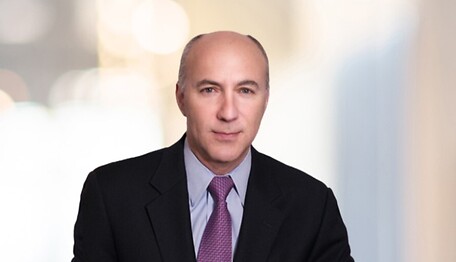District Court Overturns Purdue Pharma’s Chapter 11 Plan and Related Releases of Sackler Family from Opioid Liability Claims
On December 16, 2021, Judge McMahon of the United States District Court for the Southern District of New York (District Court) issued her decision in In re: Purdue Pharma LP[1], overturning the bankruptcy judge’s confirmation of Purdue Pharma’s Chapter 11 plan. The District Court ruled that the Bankruptcy Code does not permit the granting of non-consensual releases to non-debtor third-parties outside of the asbestos context. In doing so, Judge McMahon at least temporarily called into question the primary tool used to provide plan funding in non-asbestos mass tort bankruptcy cases - the grant of releases to the non-debtor parties providing plan funding. Chapter 11 plans ordinarily provide for voluntary releases whereby creditors are given an opportunity to consent to or opt out of such releases. However, when non-consensual third-party releases are sought to support a proposed plan (as in the Purdue Pharma bankruptcy), the debtor company requests that the bankruptcy court mandate releases for third parties by all claimants regardless of whether a subset of holdout creditors wants to preserve claims against the non-debtor parties.
KEY TAKEAWAYS
Impact on Purdue Pharma Bankruptcy
The District Court’s ruling will be appealed to the Second Circuit Court of Appeals (Second Circuit) and, most likely, the United States Supreme Court. Many insolvency professionals and scholars expect the Supreme Court to accept the appeal given the magnitude of the opioid claims and the split among many circuit courts on the important issue of the bankruptcy court’s power to approve plans with third-party releases of claims against non-debtors without the consent of claimants.
If upheld on appeal, the decision would significantly curtail Purdue Pharma’s efforts to compensate those injured by the opioid crisis and other creditors. Without the ability under Purdue Pharma’s bankruptcy plan to obtain broad immunization via third-party releases from over 800 pending civil lawsuits, the Sackler family is very unlikely to make any contribution to support the plan. Consequently, billions of dollars will not become available in the short term to settle the opioid-related claims against the Sackler family to help compensate creditors, communities and individuals who suffered from the opioid crisis.
The result, in turn, jeopardizes Purdue Pharma’s hoped-for plan to restructure and emerge from bankruptcy as a new company (with new owners unrelated to the Sackler family) whose profits would go to states and local communities to fund opioid treatment and prevention efforts. Whether the Sackler family will ultimately be held responsible for and pay more than $4.5 billion is uncertain but would likely be litigated outside of bankruptcy for many years to come.
Impact on Future Mass Tort Bankruptcy Cases
The District Court’s rejection of non-consensual third-party releases in a bankruptcy plan, if affirmed on appeal, would also make it more difficult for other companies to reorganize in future Chapter 11 proceedings by limiting their ability to fund future complex restructurings involving the settlement of mass tort and fraud claims. This is because the debtor companies themselves often lack the assets to significantly compensate their creditors. For over 30 years, non-consensual third-party releases have been a critical tool used to incentivize investors and target companies and individuals to contribute substantial amounts of money toward a reorganization of the debtor company, while allowing them to avoid further legal liability without having to file their own bankruptcy cases. Their contributions allow for faster and usually higher recoveries to creditors by avoiding the delay and costs of years of litigation against non-debtor parties outside of bankruptcy. Without such financial support, companies facing massive tort liabilities will be more likely to liquidate than reorganize in bankruptcy resulting in much lower recoveries for creditors (as argued by Purdue Pharma).
Alternatively, barring debtors from obtaining non-consensual third-party releases would prevent the use (or misuse as many commentators have argued) of the Bankruptcy Code by allegedly bad actors and co-conspirators with “deep pockets” to immunize themselves from legal jeopardy outside of bankruptcy while, at the same time, avoiding themselves seeking bankruptcy protection (which would make most of their assets available to pay creditors). Prohibiting non-consensual third-party releases in bankruptcies should, in theory, but in practice is unlikely to, discourage equity owners and related parties of companies facing massive civil claims from stripping cash and other assets from their businesses before they file for bankruptcy protection (as creditors claimed the Sackler family did by moving off-shore over $10 billion of Purdue Pharma's cash reserves).
As recognized in the District Court’s decision, preventing third-party releases without claimant consent in bankruptcies protects the due process rights of creditors with claims against companies and individuals who have not filed for bankruptcy protection. This preserves the ability of injured claimants (including state attorneys general such as those who challenged Purdue Pharma’s plan) to have their own “day in court” against the non-debtor parties to try to obtain higher recoveries than they might have received under a bankruptcy plan funded, in part, by contributions from the same parties. Assuming the Supreme Court ultimately approves the Court’s ruling overturning Purdue Pharma’s plan, only Congress could resurrect the use of non-consensual third-party releases by amending Chapter 11 of the Bankruptcy Code. The passing of such legislation, however, seems highly doubtful due to Congressional gridlock and debate over other national issues.
PURDUE PHARMA’S BANKRUPTCY PLAN AND DISTRICT COURT’S DECISION REVERSING THE BANKRUPTCY COURT’S CONFIRMATION OF THE PLAN
In September 2019, Purdue Pharma and its affiliated debtors filed petitions seeking relief under Chapter 11, intending to resolve massive existing and future claims against the debtor companies arising from their manufacturing and marketing of the prescription drug OxyContin. Specifically, Purdue Pharma sought to use the channeling injunction and release provisions in the Bankruptcy Code created for addressing bankruptcy cases involving mass tort claims against the debtor companies in the asbestos industry. After extensive negotiations among the various constituencies in Purdue Pharma’s case, the bankruptcy court approved its proposed Chapter 11 plan (Plan), which provided broad, non-consensual releases of direct and derivative opioid-related claims against members of the Sackler family and related parties (Sackler Third Party Releases), all of whom had not filed for bankruptcy. The Plan is funded through a complex financial settlement comprised of, among other things, Purdue Pharma’s assets and $4.275 billion funded by the Sackler family in exchange for the Sackler Third Party Releases. Numerous state attorneys general and claimants as well as the United States Trustee objected to confirmation of the Plan, arguing that the bankruptcy court lacked power to approve the Sackler Third Party Releases provided by the Plan. The Bankruptcy Court found the grant of the Sackler Third Party Releases appropriate under the Bankruptcy Code and confirmed the Plan. Appeal to the District Court immediately followed.
In a 142-page opinion, the District Court performed a comprehensive analysis of an unsettled question that has split federal circuit courts for decades: whether a bankruptcy court is statutorily authorized to grant non-consensual, third-party releases of claims against non-debtors outside of cases involving asbestos claims. The District Court first considered Section 524(g) of the Bankruptcy Code, passed by Congress in 1994, which provides for injunctions barring third-party claims against non-debtors “solely and exclusively in cases involving injuries arising from the manufacture and sale of asbestos.” The District Court noted that Congress retained the authority to determine whether and how to extend this rule to permit non-debtor releases in insolvency proceedings seeking relief from non-asbestos liabilities. Notably, Congress has remained silent on the issue.
The District Court next considered the Second Circuit decision in Deutsche Bank A.G. v. Metromedia Fiber Network, Inc.[2] (Metromedia), declaring that non-consensual third-party releases of claims against non-debtors could be approved in “appropriate, narrow circumstances.” The Second Circuit, however, did not provide a clear standard for determining when such narrow circumstances apply to justify the use of non-consensual third party releases in a plan.
In analyzing the decisions by other federal circuit courts, the District Court concluded that a majority of the circuit courts that have addressed the statutory authority question either utterly dismiss the claim that such authority exists or, similar to the Second Circuit, “(i) reject the notion that such authority can be found by looking solely to Section 105(a) and then (ii) fail to answer the question of where such authority can be found.” Furthermore, only two circuit courts agree with the bankruptcy court’s conclusion in Purdue Pharma’s case.
The District Court then conducted a thorough analysis of each of the statutory provisions that the bankruptcy court relied on to approve the Sackler Third Party Releases as “necessary or appropriate” to carry out the provision of the Bankruptcy Code: Sections 105(a), 1123(a)(5) and (b)(6), and 1129, together with “residual authority,” as follows:
- Section 1123(b)(6) provides that a plan may “include any other appropriate provision not inconsistent with the applicable provisions of this title.” The District Court noted that the Plan is inconsistent with the Bankruptcy Code because it does not provide a carveout for debts arising out of fraud, which Congress expressly excepted from discharge.
- Section 1123(a)(5) provides that a plan of reorganization must “provide adequate means for [its] implementation.” Ultimately, the District Court concluded that nothing in Section 1123(a)(5) authorizes a court to grant something the Bankruptcy Code does not otherwise allow, simply because doing so would ensure funding for a plan.
- Section 1129(a)(1) provides that a bankruptcy court “shall confirm a plan only if . . . the plan complies with the applicable provision of this title.” Like the other sections cited by the bankruptcy court, Section 1129(a) “confers no substantive right that could be used to undergird a §105(a) injunction.” As such, the District Court found that Section 1129(a) does not provide independent authority to allow the Sackler Third Party Releases.
The District Court also rejected Purdue Pharma’s argument that the bankruptcy court must be statutorily authorized to approve the Sackler Third Party Releases because no provision of the Bankruptcy Code expressly prohibits them. The District Court reasoned that the Bankruptcy Code “provides a comprehensive federal system,” such that silence is inconsistent with comprehensiveness, which the District Court defined as “complete, including all elements.” Consequently, the District Court concluded that “[r]eading elements that do not appear in the text of the Code into the Code is the antithesis of comprehensiveness.”
Finally, the District Court disagreed with the bankruptcy court’s reliance on the Supreme Court’s decision in In re Energy Resources Co[3], which held that a bankruptcy court has “residual authority” to approve reorganization plans that include all “necessary and appropriate” provisions, as long as the provisions are not inconsistent with title 11. The District Court instead pointed to another Supreme Court decision, Norwest Bank Worthington v. Ahlers[4], which held that “the bankruptcy court’s residual equitable authority was bounded by the provisions of the Bankruptcy Code.” The District Court, therefore, held that since nothing in the Bankruptcy Code authorizes non-consensual third-party releases against non-debtors, the bankruptcy court may not insert, under its “residual authority,” a right that does not appear in the Bankruptcy Code.
As District Judge McMahon concluded, “[t]his will not be the last word on this subject, nor should it be.” The decision will undoubtedly be appealed to the Second Circuit, and may well end up before the United States Supreme Court. We will continue to monitor and report on the outcome of further appeals of Purdue Pharma’s Plan.
Click here to view the article as published in Pratt's Journal of Bankruptcy Law.
If you have questions or would like additional information, please contact Steven Ostrow (ostrows@whiteandwilliams.com; 212.714.3068), Thomas Pinney (pinneyt@whiteandwilliams.com; 215.864.6371) or Mariam Khoudari (khoudarim@whiteandwilliams.com; 215.864.6293).
[1] In re: Purdue Pharma LP, 7:21-cv-07532
[2] Deutsche Bank A.G. v. Metromedia Fiber Network, Inc., 416 F.3d 136, 141 (2d Cir. 2005)
[3] In re Energy Resources Co, 495 U.S. 545 (1990)
[4] Norwest Bank Worthington v. Ahlers, 485 U.S. 197, 206 (1988)
PRACTICE AREAS
Practice Areas
KEY ATTORNEYS
-
Partner
-
Partner


